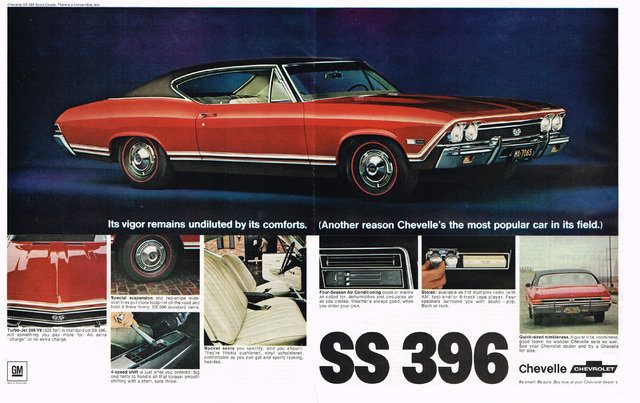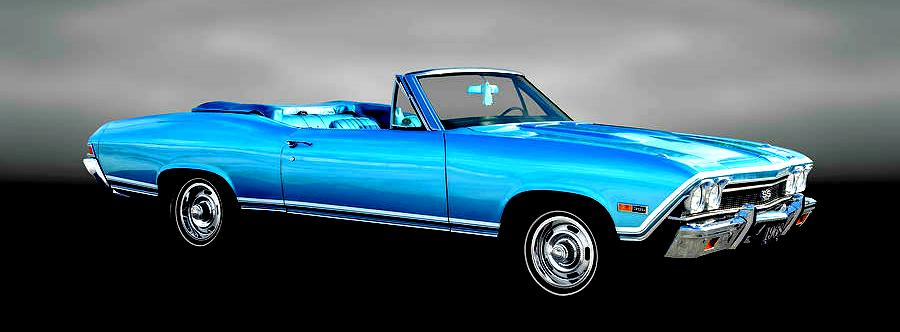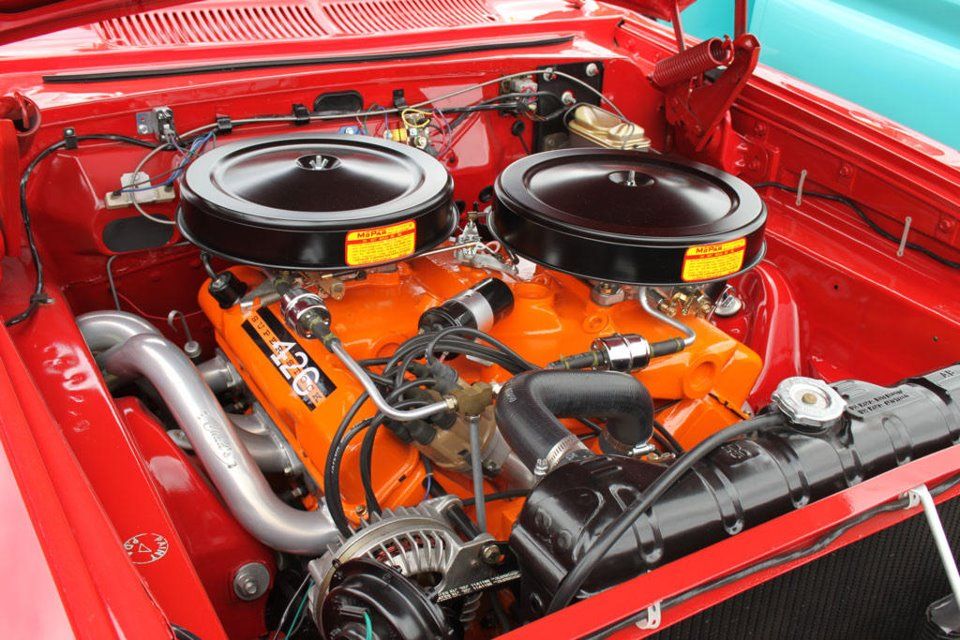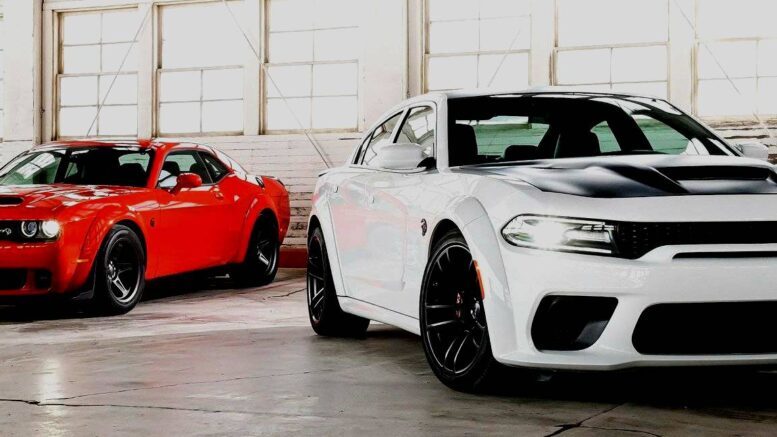Muscle cars yesterday and today!
Q: Hi, Greg and I really enjoy reading your column in our local newspaper, The Press Enterprise in Bloomsburg, Pa. I especially like your knowledge and research regarding the muscle cars of the 50’s, 60’s, and 70’s. Those were some of the best engines and drivetrains ever built for non-commercial and non-military customers.
To think those engineers designed and built motors and transmissions using plans written down with paper and pencil, and with calculations derived from slide rules and basic calculators (as they became available)!
My question is what do you think those engineers could do today with the technology and materials available in the modern world? Just imagine what they could have produced with fuel injection, turbo boost, 10 speed transmissions, microcomputers, and everything else packed into today’s modern vehicles. Just a thought.
Thank you, and keep those articles coming, Carey Schell from Mifflinville, Pa.
A: Carey thanks for your letter and kind words. You bring up good points and a question I’ll answer with ease. I test drove a 2021 Dodge Charger Hellcat Redeye not too long ago featuring a 797-horsepower supercharged Hemi. It was an awesome, comfortable Mopar with all the modern safety additions, great brakes, and “in your face” acceleration. Back in the 1960s, the power was there but trying to slow down after a quarter-mile pass was something else. Many cars still had drum brakes all around!
So, although it took a bit long to get here, the answer to your question sits at your area’s new car dealer, ala all the high power Mustang, Camaro, and Challenger / Charger supercars. But hurry, as come 2024 many with the powerful V8s will be gone with concentration turning to electric.

This advertisement for the 1968 Chevelle SS396 clearly indicated it was a very popular muscle car. (Chevrolet)
1968 Chevelle SS396 inquiry
Q: Hi Greg! I found an article you wrote on the Internet. I would like to know if you are able to break down more than what I can find online? I have a ‘68 Chevelle SS396 (138 car) that I bought, less the engine and transmission, and want to find out as much as I can about the engine and transmission it originally came with. It’s badged as a 396 and probably had a 4-speed. It does have a 3:36 12-bolt posi-rear with no power steering, no power brakes and no AC, according to the VIN and Trim Tags.
I’m pretty sure the guy that owned the car before the guy I bought it from blew the original engine up and put another engine in it. I was told it had a 427 with 3-deuces. I was also told they had no air cleaners on it, and as they were out hot-rodding on the street it backfired and belched fire out of the carbs and caught the padding on the bottom of the hood on fire. I guess it must have been a pretty good fire, as it burned the front wire harness up, along with the hood.

The 1968 Chevelle SS396 came in three flavors, including 2-door sports coupe, convertible and the El Camino pickup. The engines included a trio of 325, 350 and 375 horse versions to choose from, and the convertible was the rarest of the SS models as just 2,228 were ever built. (Chevrolet)
I already Googled “1968 Chevelle SS396” and found the article you did in “Go Upstate” magazine published on June 8, 2020. I also know all the engine and transmission info you talked about as I have the old Motor Service books from the 1960’s that I used working on all the small and big block stuff for my buddies (GM, Ford, and Mopar).
I have been working on cars for close to 59 years now as a hobby and started as a kid with my dad who was a diesel mechanic. Signed, John Visser, via email.
A: John, thanks for your letter. Since you already deciphered the VIN and Body Tags online, it pretty much comes down to the powertrain. There were three 396 engines available that year, a base 325 code L35, then the 350 horse version code L34 and the ultimate 375 horse, solid lifter version, known as the L78 code option.
The big block engines were all built in Tonawanda, N.Y., but be it a 325, 350 or 396, I guess we’ll never know. Unfortunately, these 396 engines had stampings all over them that corresponded to the car being an original numbers matching engine or not. However, most important is that the VIN on your car starts with the “138” designation, meaning it is indeed a “from the factory” SS396 car. Of the total 464,699 Chevelles built that year, just 55,309 were “138” 2-door SS396 sport coupes, 2,268 were SS396 convertibles, and 5,190 were the SS396 El Camino pickups.
As for Muncie 4-speeds, there were three to choose from, including two close-ratio M21 and M22 4-speeds, (the latter the famous Rock Crusher) and a M20 Muncie “wide range” 4-speed with wide-ratio internals.
One thing we know for sure, your car is a real factory “138” SS396, but as for which one and what Muncie 4-speed I don’t think we’ll know for sure as the engines had its own corresponding stampings on them, and that’s one thing you don’t have.
If there’s any other info I can dig up I’ll let you know, but the 3:31 12-bolt is the normal rear for 396s that year and most every other year, too. Thanks for your emails and photos; and in closing, I put your VIN on one of the online “VIN Decoders” and it came up as a 1965 Chevelle! LOL, proving you can’t trust everything on the Internet. The other decoders did correctly identify your car as a 1968 Chevelle SS396.

The 1965 Plymouth Belvedere could be ordered with an optional Street Wedge 426 with one four barrel carb. The Max Wedge, which grew from a 413 in ’62 to a 426-V8 in 1963 and 1964, featured 2×4 carbs but supposedly wasn’t available in 1965. However, some say a few Max Wedges slipped through in’65. Regardless, Belvedere’s good looks made it a popular street cruiser that turned into a quarter-mile terror at the weekend drag races. (Former Plymouth Division of Chrysler)
Is it or isn’t it a 1965 Plymouth ‘Max Wedge?’
Q: Good afternoon sir. I was hoping that you could give me some direction. We have an old 1965 Plymouth Belvedere with a 426 Max Wedge and we are trying to find someone who can interpret the VIN and the fender tag. Any help would be greatly appreciative.
I am not quite certain, but this Belvedere may have been a factory four-speed car. I remember the previous owner saying years ago that he had a 727 automatic put in because he couldn’t keep a clutch in it. There’s no intake on it, but my boss and the previous owner both swear that it used to have 2-4 barrel carburetors on it. Thank you, James Conrad, via email.
A: James, thanks to the photos you sent of the engine numbers, etc., I highly advise you get in touch with a professional muscle car appraiser immediately as you might be sitting on some serious money thanks to your car’s engine. Real 426 Max Wedge cars are very popular with collectors, so any money you put into your Plymouth to get it into nice shape will be money well spent.
Secondly, if you decide to sell in its current shape, NADA Classic Cars has your ‘65 Belvedere with the Max Wedge listed at low retail of $16,100, mid level condition at $43,900, and top condition at $56,600. These numbers should get your heart pumping!

The Max Wedge 426 left little to the imagination when it came to what the engine was built for, and none of it was economy or fuel mileage. This 1964 version put out a conservative 420 horsepower. (Plymouth Division)
Now, I’ll get to some confusing information about a 1965 Street Wedge 426. In addressing your car not having an intake manifold when you acquired it, many enthusiasts note that the Max Wedge 426 was not produced in 1965. Chrysler went to a “Street Wedge” 426 that year while concentrating on its new 426 Hemi engines. Thus, the 1965 Street Wedge hydraulic cam version was rated at 365 horses with a single four-barrel as opposed to the solid lifter 415 and 420-horse Max Wedge 2×4-barrel editions.
However, I’ve been told by some excellent sources that Plymouth and Dodge allowed a few 426 Max Wedge models to get through the production lines in ‘65, and yours could be one of them. I recommend Galen Govier to help you out, as he knows everything MOPAR and you can check him out at http://galengovier.com.
Now, even though I hope your ’65 Plymouth came with the Max Wedge, if I were a betting man I’d put my money on yours being a 365-horse Street Wedge, which is still a valuable car but nothing like the real deal Max Wedge.
Keep me informed as to what happens with your ‘65 Belvedere.
(Greg Zyla is a syndicated auto columnist who welcomes questions and input on auto nostalgia, collector cars or motorsports at greg@regzyla.com or at 303 Roosevelt St., Sayre, Pa. 18840)



Be the first to comment on "Collector Car Corner / Cars We Remember; More reader letters: Max Wedge, ‘68 SS396 and high-tech muscle cars"